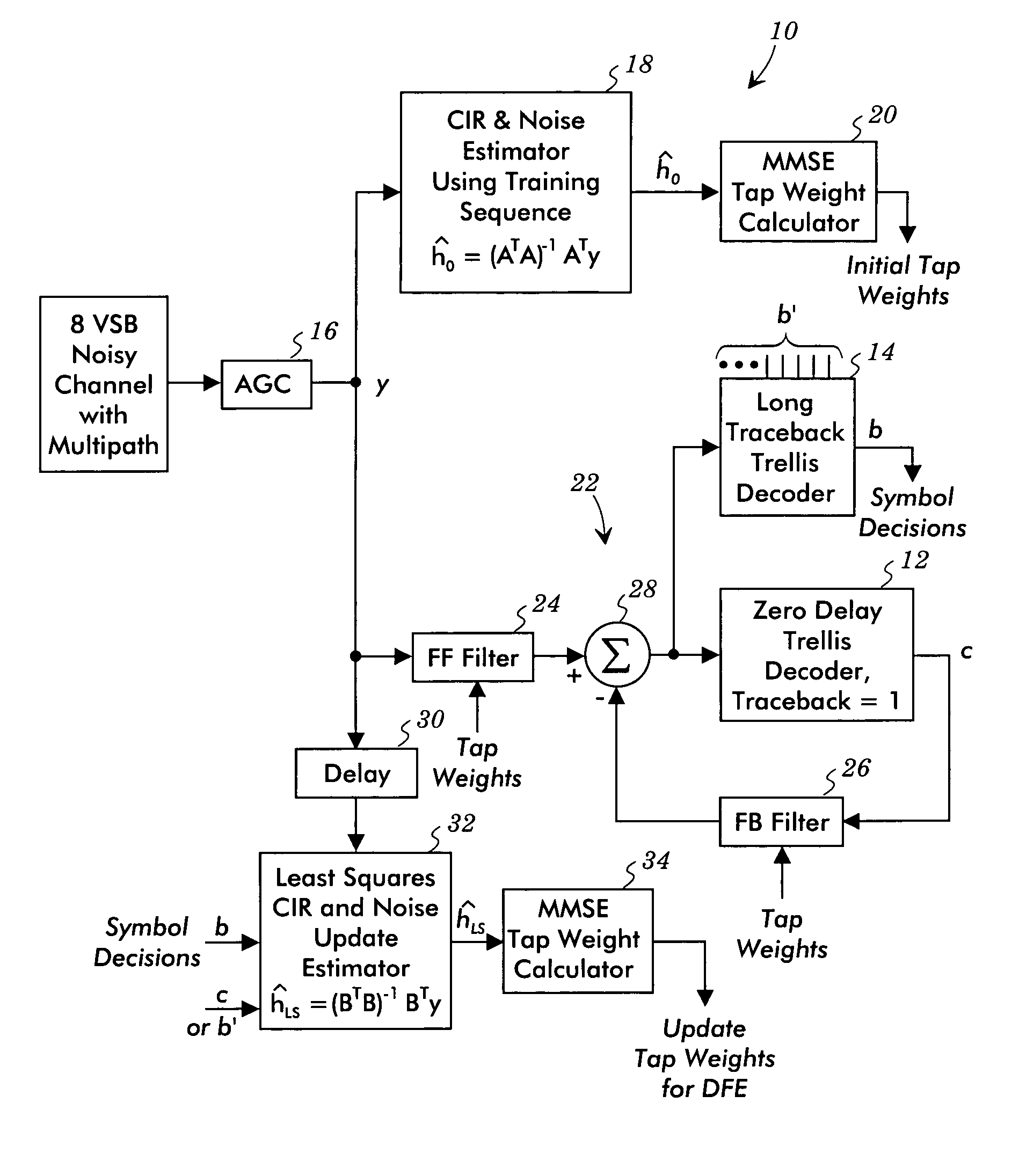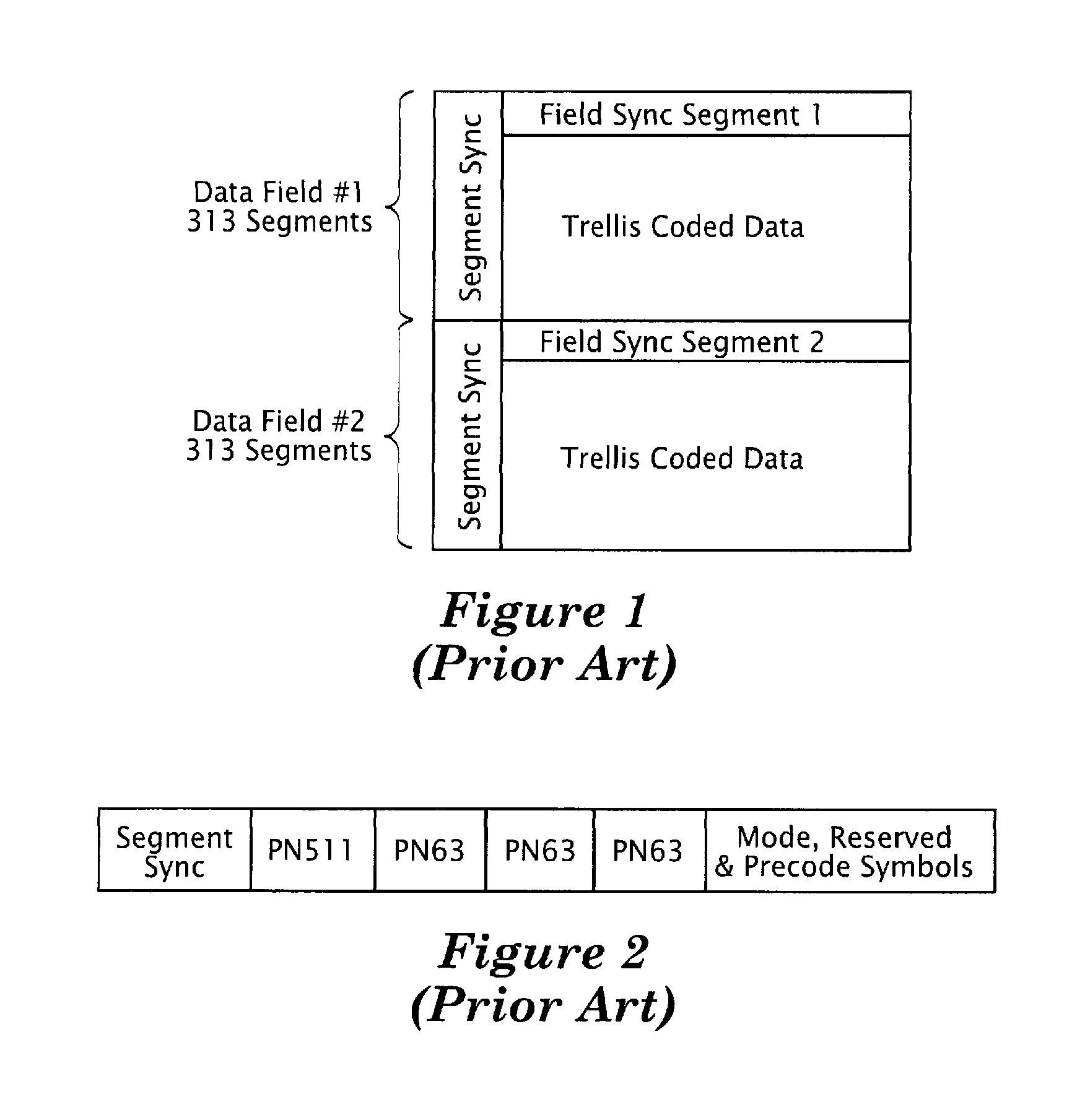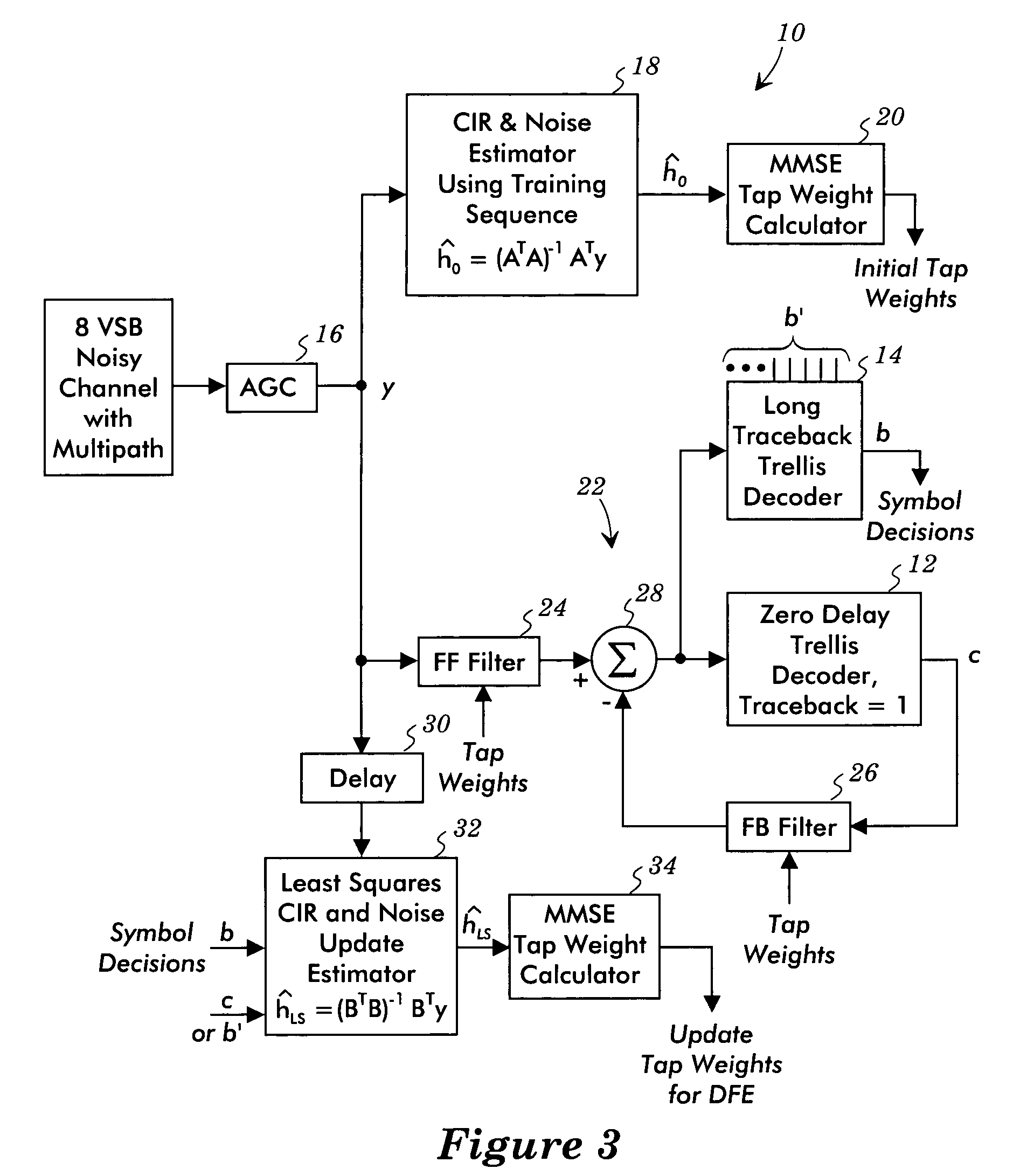Channel impulse response estimating decision feedback equalizer
a decision feedback and channel impulse technology, applied in pulse technique, amplitude demodulation, baseband system details, etc., can solve the problems of multipath interference, long total convergence time of decision feedback equalizer, signal transmitted through channel subject to time varying channel conditions, etc., to achieve short processing delay and long processing delay
- Summary
- Abstract
- Description
- Claims
- Application Information
AI Technical Summary
Benefits of technology
Problems solved by technology
Method used
Image
Examples
Embodiment Construction
[0022]FIG. 3 illustrates a decision feedback equalizer system 10 that avoids and / or mitigates the convergence and / or tracking problems of previous decision feedback equalizers. The tap weights are calculated based on estimates of the channel impulse response. This arrangement makes use of two decoders, e.g., a short traceback trellis decoder 12 and a long traceback trellis decoder 14. The short traceback trellis decoder 12, for example, may be a zero delay trellis decoder having a traceback depth of one, and the long traceback trellis decoder 14 has a long traceback depth, such as a traceback depth of 32. Theses trellis decoders are 12 phase trellis decoders with a delay equal to 12× (traceback depth−1).
[0023]The signal from the channel is processed by an automatic gain controller 16, which provides the equalizer input signal y. A channel impulse response and noise estimator 18 uses the transmitted training sequence as received in the equalizer input signal y and a stored version of...
PUM
 Login to View More
Login to View More Abstract
Description
Claims
Application Information
 Login to View More
Login to View More - R&D
- Intellectual Property
- Life Sciences
- Materials
- Tech Scout
- Unparalleled Data Quality
- Higher Quality Content
- 60% Fewer Hallucinations
Browse by: Latest US Patents, China's latest patents, Technical Efficacy Thesaurus, Application Domain, Technology Topic, Popular Technical Reports.
© 2025 PatSnap. All rights reserved.Legal|Privacy policy|Modern Slavery Act Transparency Statement|Sitemap|About US| Contact US: help@patsnap.com



